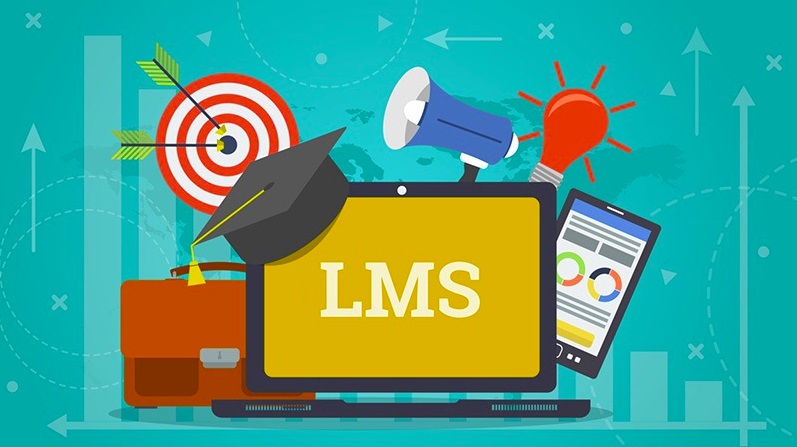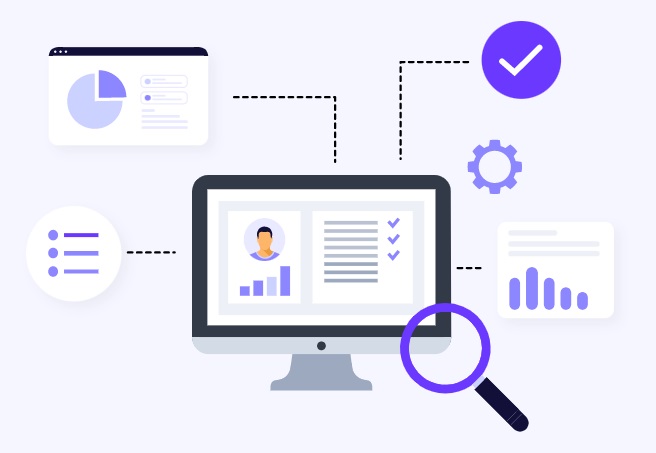A Learning Management System (LMS): Everything There Is To Know
In this article, we review LMS tools and their types. LMS development services are becoming more and more important for modern businesses. They can enhance learning for schools (private and public) and various organizations with advanced training.
 Picture 1 of A Learning Management System (LMS): Everything There Is To Know
Picture 1 of A Learning Management System (LMS): Everything There Is To Know
The Definition of Learning Management Systems
Learning Management Systems have some defining features:
1) Lesson structuring: the key feature many people look for is a structure in learning. The worst thing that can happen to a student is a chaotic teacher. LMS removes this problem by presupposing some structure in lessons. When you create courses in LMS, they must have a clear set of lessons and sub lessons. This approach makes teachers more disciplined and helps individuals with a learning plan;
2) Media integration: video and audio learning is often the most appropriate method for students. Let's imagine COVID-19 returns: teaching in person is dangerous in these conditions. Media integration in LMS solves this problem by seamlessly integrating lecture records and videos from other people. Many platforms even make it possible to highlight the script inside their interface. These capabilities make LMS perfect for accessibility and short learning sessions;
3) Student registering and testing: a common problem for teachers is knowing what their students are doing. A Learning Management System solves these problems by tracking the students' progress and automating tests. There's no longer any need to concentrate on these boring tasks personally. LMS does everything for the teachers so that they can concentrate on creative tasks.
Types of LMS
LMS are of several types: we split them by origin and installation method. There are proprietary (custom-built or general) and open-source solutions. You can ask some companies to deliver an in-house framework or work on installing the existing platforms from the web. Here, the difference is simple: open source solutions are free but may have weak support; proprietary approaches are payment-based but offer great help from the developers. As for the installation type, we know cloud and in-house solutions. A company can use an LMS on the Internet or install everything on their internal computers. The first option is great for comfort, and the second is better for safety.
Benefits of using an LMS
LMS brings about the following benefits:
1) Less time on administrative tasks: an LMS does tests and tracks the students' progress. There's no need for teacher control anymore, giving them time to develop creative tasks;
2) Great flexibility: LMS is often perfect for organizing teaching outside work time. It also enables distance learning: if you need to work with people from different countries, LMS is there to help;
3) Better engagement: videos and other interactive materials work great in case of attention span problems. Many students may find learning through videos easier and more enticing because they already learn most information this way.
Recap
Overall, LMS frameworks are a perfect option for any company seeking to improve its standing. Why? Because they automate many learning processes and make distance learning possible. Contacting professionals is essential if you're interested in advancing new approaches to learning. In this regard, we recommend KeenEthics: their experts offer many insights. One can find them via this link: https://keenethics.com/
You should read it
- [Infographic] AI and Machine Learning in the enterprise
- Things to know about SMAS school management software
- Release Firebird Database Management System 2.5
- How to Reset the System Management Controller (SMC) on a Mac
- Top 6 outstanding online learning trends in 2018
- SQL Server setup is always available
- Google researchers for gaming AI to improve enhanced learning ability
- Learn about computer file management systems
- Study online on e-Learning lectures
- What is Microsoft Management Console (MMC)? Steps to use Microsoft Management Console
- What is machine learning? What is deep learning? Difference between AI, machine learning and deep learning
- Bookmark 5 best Python programming learning websites






![Photo of [Infographic] AI and Machine Learning in the enterprise](https://tipsmake.com/data/thumbs_80x80/[infographic]-ai-and-machine-learning-in-the-enterprise_thumbs_80x80_36QibFSJM.jpg) [Infographic] AI and Machine Learning in the enterprise
[Infographic] AI and Machine Learning in the enterprise Things to know about SMAS school management software
Things to know about SMAS school management software Release Firebird Database Management System 2.5
Release Firebird Database Management System 2.5 How to Reset the System Management Controller (SMC) on a Mac
How to Reset the System Management Controller (SMC) on a Mac Top 6 outstanding online learning trends in 2018
Top 6 outstanding online learning trends in 2018 SQL Server setup is always available
SQL Server setup is always available